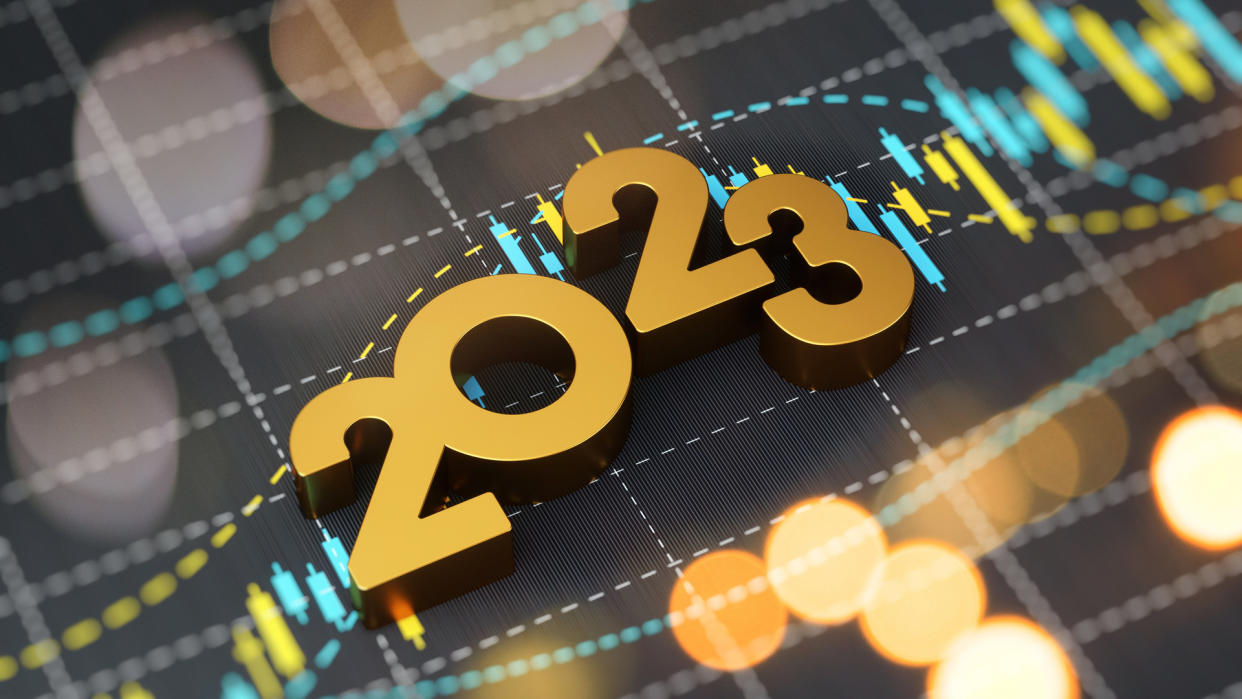Is It Time To Switch From Passive or Active Investing in 2023?

Active investing involves researching and picking specific stocks, whereas passive investing tracks the performance of an underlying index, commonly the S&P 500. There has been an age-old debate over which investment style is better, but the numbers show that when factoring in investment fees, most money managers underperform their target indices.
Check Out: 9 Safe Investments With the Highest Returns
Learn: 3 Things You Must Do When Your Savings Reach $50,000
This was demonstrated most publicly by the billionaire CEO of Berkshire Hathaway, Warren Buffett, when he bet an active manager that the S&P 500 would outperform him over a 10-year period — which it did, handily. But although passive investing has generally beaten active investing recently, there are clouds on the horizon suggesting that things may be changing. Here’s a look at whether it’s time to shift from being an active to a passive investor, or vice versa.
The Dilemma
Thanks to the success of certain stocks in recent years, the active vs. passive debate has taken on an added dimension. Whereas passive investors in the S&P 500 may feel like they are by definition diversified, the exact opposite is the case currently. That’s because the S&P 500 is a market-weighted index, meaning it allocates its portfolio based on the total value of a stock. The top two stocks in the S&P 500, Apple and Microsoft, make up more than 13% of the entire index’s value, and the top 10 stocks comprise about 25%.
This kind of top-heavy weighting can make even a portfolio of 500 stocks unbalanced. Consider year-to-date performance in 2023 as an example. Just five stocks – Alphabet, Apple, Microsoft, Meta Platforms and Nvidia – have provided a whopping two-thirds of the entire market gain in 2023. This means that the bulk of the 495 remaining stocks in the index have had little-to-no effect.
I’m a Self-Made Millionaire: These Are the 6 Investments Everyone Should Make During an Economic Downturn
What Passive Investors Should Consider
The very nature of passive investors means they don’t often “look under the hood” and see from where their returns come. Even in a market where just five stocks are providing the bulk of the gains, at the end of the day, passive S&P 500 investors are up about 6% year-to-date as of April 25, 2023. But passive investors should take the time to fully understand the ramifications of their investment choice.
For starters, economists and analysts around the country are ringing the bell about a potential recession in the coming months. If that were to occur, it’s likely that the high-flying stocks at the top of the S&P 500 pyramid will take it on the chin. Not only do growth stocks with high valuations tend to lose those premiums during recessions, so too do stocks with huge gains, as investors book profits even before the recession arrives.
As stocks with giant market capitalizations have an outsized effect on the performance of the index as a whole, it may not matter much if “value” stocks that tend to do better in recessions, like utilities and consumer staples, rally. If those types of stocks only have a sub-1% weighting in the index, the effect of a stock like Apple, which makes up over 7% of the S&P 500, will swamp them.
Things for Active Investors To Note
With just five stocks making up the majority of the return in the S&P 500 thus far in 2023, it would seem as if stock pickers would outperform. After all, this means that passive investors have most of their money in stocks that aren’t going anywhere, whereas stock pickers could have scored home runs with the 72% return in Meta Platforms or the 80% return in Nvidia.
The problem is that active investing isn’t that easy. With hindsight, it’s obvious to see that investors should have been in stocks like these in 2023. But with just five huge winners out of 500 to choose from, active investors would have had to have been either very good or very lucky at picking just the winners.
There have also been some huge losers thus far in 2023, such as Veon Ltd. and First Republic Bank, both down 93%, in spite of having market capitalizations of over $1 billion. If you’re at all risk-averse, choosing individual equities might not be your cup of tea.
So, What’s the Answer?
If a recession does indeed hit the U.S., it’s likely that the S&P 500 index will be taken down, possibly falling into a bear market. This can hurt passive investors. And while most stocks fall during a bear market, knowledgeable stock traders can still pick winners. But actively investing in individual equities also increases exposure on the downside, as you have to pick both the right stocks and choose the right time.
Passive investors with a long-term investment horizon, on the other hand, will generally always be made whole, as the S&P 500 has — historically speaking — never failed to make a new all-time high after enduring a bear market. Whether you should be an active or a passive investor — or a bit of both — during 2023 depends on your own investment objectives, risk tolerance and personality as an investor.
More From GOBankingRates
This article originally appeared on GOBankingRates.com: Is It Time To Switch From Passive or Active Investing in 2023?
